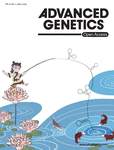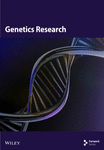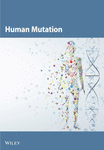Journal list menu
Export Citations
Download PDFs
Editorial
Open Access
oa
Artificially Created Nucleic Acids and Peptides/Proteins in Chemical Biology
- First Published: 15 January 2013
Review Article
Open Access
oa
Using Aptamers for Cancer Biomarker Discovery
- First Published: 15 January 2013
Review Article
Open Access
oa
Lighting Up RNA-Cleaving DNAzymes for Biosensing
- First Published: 08 November 2012
Review Article
Open Access
oa
Dioxaphosphorinane-Constrained Nucleic Acid Dinucleotides as Tools for Structural Tuning of Nucleic Acids
- First Published: 24 October 2012
Review Article
Open Access
oa
Challenges and Opportunities for Small Molecule Aptamer Development
- First Published: 24 October 2012
Review Article
Open Access
oa
Genetically Encoded Libraries of Nonstandard Peptides
- First Published: 14 October 2012
Review Article
Open Access
oa
Potential of Peptides as Inhibitors and Mimotopes: Selection of Carbohydrate-Mimetic Peptides from Phage Display Libraries
- First Published: 10 October 2012
Review Article
Open Access
oa
Artificial Specific Binders Directly Recovered from Chemically Modified Nucleic Acid Libraries
- First Published: 08 October 2012
Research Article
Open Access
oa
Imaging mRNA Expression in Live Cells via PNA·DNA Strand Displacement-Activated Probes
- First Published: 26 September 2012
Research Article
Open Access
oa
Superior Silencing by 2′,4′-BNANC-Based Short Antisense Oligonucleotides Compared to 2′,4′-BNA/LNA-Based Apolipoprotein B Antisense Inhibitors
- First Published: 26 September 2012
Research Article
Open Access
oa
In Vitro Selection of Fab Fragments by mRNA Display and Gene-Linking Emulsion PCR
- First Published: 23 September 2012
Research Article
Open Access
oa
Inhibition of HIV Replication by Cyclic and Hairpin PNAs Targeting the HIV-1 TAR RNA Loop
- First Published: 17 September 2012
Review Article
Open Access
oa
Practical Tips for Construction of Custom Peptide Libraries and Affinity Selection by Using Commercially Available Phage Display Cloning Systems
- First Published: 09 September 2012
Review Article
Open Access
oa
Recent Advances in Chemical Modification of Peptide Nucleic Acids
- First Published: 06 September 2012
Research Article
Open Access
oa
Combinatorial Synthesis, Screening, and Binding Studies of Highly Functionalized Polyamino-amido Oligomers for Binding to Folded RNA
- First Published: 21 August 2012
Review Article
Open Access
oa
Directed Evolution of Proteins through In Vitro Protein Synthesis in Liposomes
- First Published: 16 August 2012
Research Article
Open Access
oa
A Concept for Selection of Codon-Suppressor tRNAs Based on Read-Through Ribosome Display in an In Vitro Compartmentalized Cell-Free Translation System
- First Published: 13 August 2012
Research Article
Open Access
oa
Structural and Functional Characterization of RecG Helicase under Dilute and Molecular Crowding Conditions
- First Published: 08 August 2012






